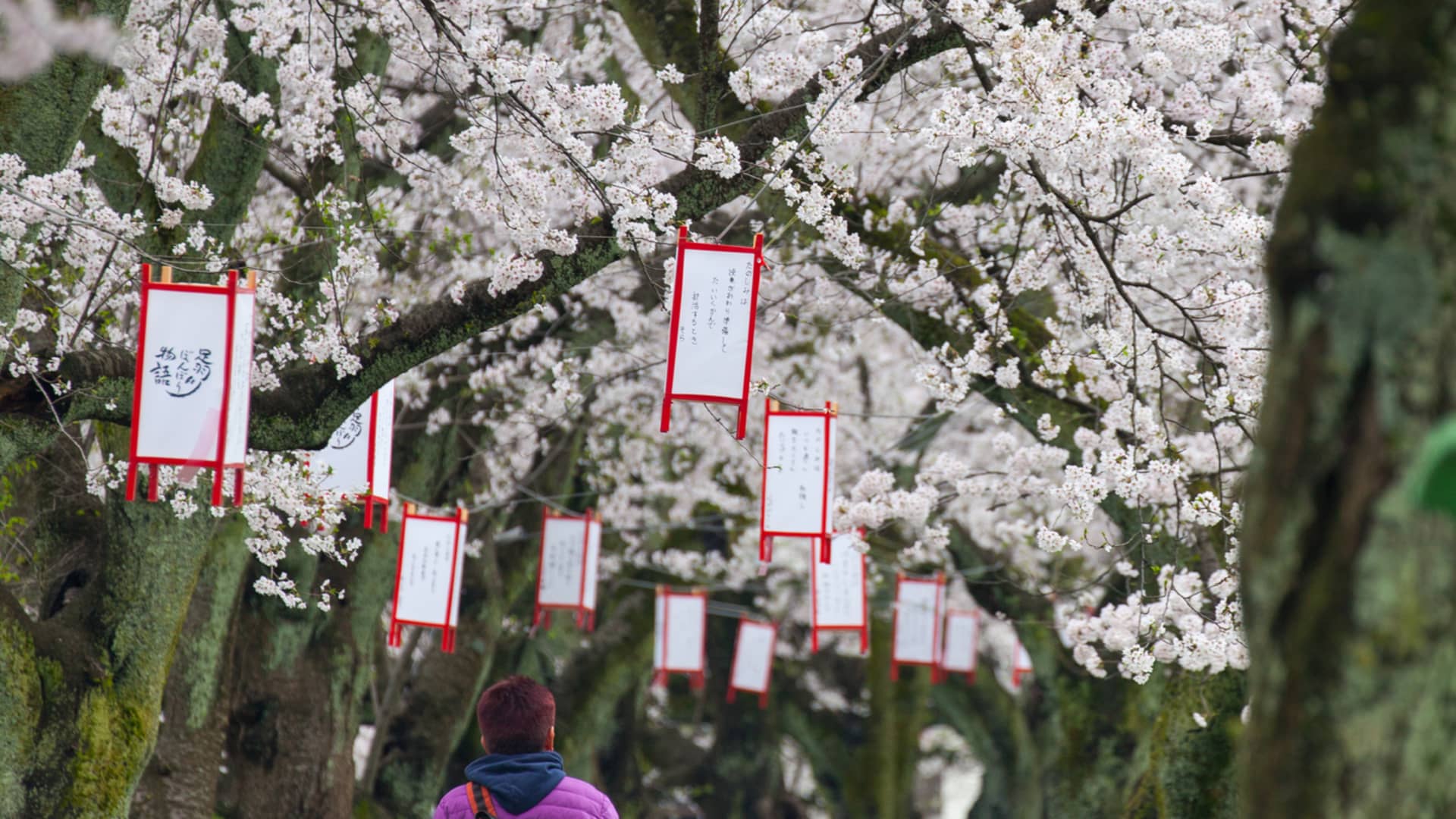Japan is launching a new high-speed bullet train, or shinkansen, extension on Saturday that will make an under-the-radar prefecture far more accessible to travelers.
The coastal Fukui Prefecture is some 185 miles west of Tokyo. The new train will pass through the city of Fukui, the town of Awara and other places guidebooks rarely mention, before reaching the port town of Tsuruga, adding some 78 miles to the Hokuriku Shinkansen’s existing Tokyo-to-Kanazawa service.
Once it begins on March 16, the route will open a door to a part of Japan — known for dinosaurs, Zen meditation and soothing hot-spring baths — where few international travelers go.
Jurassic Japan
Of all the stops on the new extension, Fukui makes the best base for visiting the sights of the prefecture.
Dinosaurs are one of the area’s main draws, from the robotic replicas at Fukui Station to the local mascot, a smiley, green dino named Juratic, whose face is emblazoned on souvenirs throughout the city.
There is good reason for that. Close to 80% of Japan’s dinosaur fossils were discovered in Fukui, something the Fukui Prefectural Dinosaur Museum in Katsuyama does an excellent job of detailing in Japanese and English.
Just under an hour from Fukui Station on the trundling Katsuyama-Eiheiji rail line, the cavernous museum houses a collection of remains and exhibits on the existence and demise of dinosaurs, plus life-size animatronics of a menacing Tyrannosaurus rex and a long-necked herbivore. Fossil digs in the connected Katsuyama Dinosaur Park add a hands-on element that’s especially well-geared for families.
Finding Zen and hot springs
On the local train back to Fukui, travelers interested in learning about Zen Buddhism can hop off at Eiheijiguchi Station to go to Eiheiji, a temple and monastery founded in the 1200s by the legendary Zen priest and scholar Dogen.
Travelers with a couple of hours can explore the temple buildings, but it’s also possible to plan an overnight temple stay that includes options for zazen meditation sessions and traditional plant-based Buddhist meals.
A Geisha walks through a performance hall in Awara, Japan.
Buddhika Weerasinghe | Getty Images News | Getty Images
With an extra day in Fukui, another option is to take the new shinkansen to Awara for a spot of traditional pampering. Like many small hot spring towns in Japan, the reason most people visit Awara is to spend a night at a ryokan inn, where they soak in mineral-rich baths, slip into yukata gowns, unwind in tatami mat guestrooms and indulge in kaiseki-ryori dinners featuring a photogenic array of small in-season dishes.
But there is plenty to do in Awara beyond baths and ryokans, with hands-on experiences like glassblowing and ceramics at Kanaz Forest of Creation — a 200,000 square-meter forest home to art installations and walking trails. Rural areas also have orchard-picking — strawberries in the spring and blueberries, grapes and Asian pears in the summer.
The end of the line
The new shinkansen service ends in the town of Tsuruga. Arguably, there’s less to linger for here, but those with a few hours to spare can visit a few standout sights accessible via the town bus.
Suishouhama Beach, near the town of Tsuruga.
Arief Juwono | Moment | Getty Images
The Kehi-no-Matsubara beachside pine grove is a nationally designated site of scenic beauty.
Also along the coast is the Port of Humanity Museum, which details how Jewish refugees from Poland and Lithuania arrived in Tsuruga in the 1940s after being granted special visas by Japanese diplomat Sugihara Chiune. It’s estimated that Sugihara saved several thousand Jews from Nazi concentration camps.
Travelers can also follow the footsteps of the 17th-century haikuist Matsuo Basho, who visited Tsuruga’s Kehi Jingu shrine to see the autumnal full moon during a journey immortalized in the haiku-punctuated travelogue “The Narrow Road to the Deep North.”
Kehi-no-Matsubara in Tsuruga, Japan.
Mixa | Getty Images
The shrine has been rebuilt several times since Basho’s visit, but the version he saw certainly left an impression. “The air of the shrine was hushed in the silence of night,” he wrote, “and the moon through the dark needles of pine shone brilliantly.”
While Basho left Tsuruga plodding slowly south, today express trains run from Tsuruga down to Kyoto in just under an hour, or southeast to Nagoya in 90 minutes. Travelers can also reboard the new shinkansen for the three-hour ride back to Tokyo.

